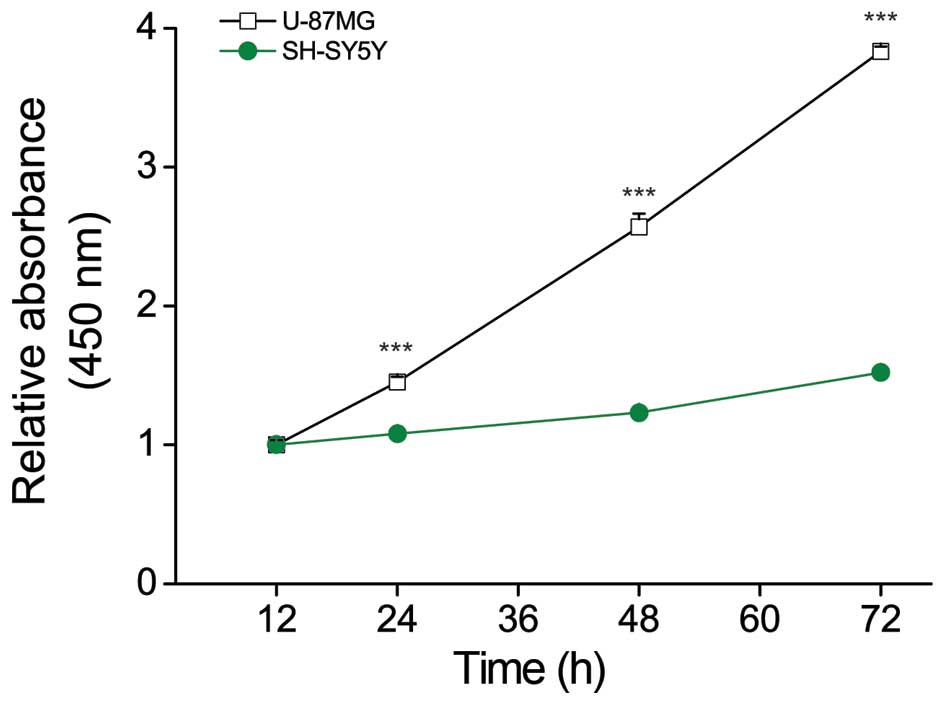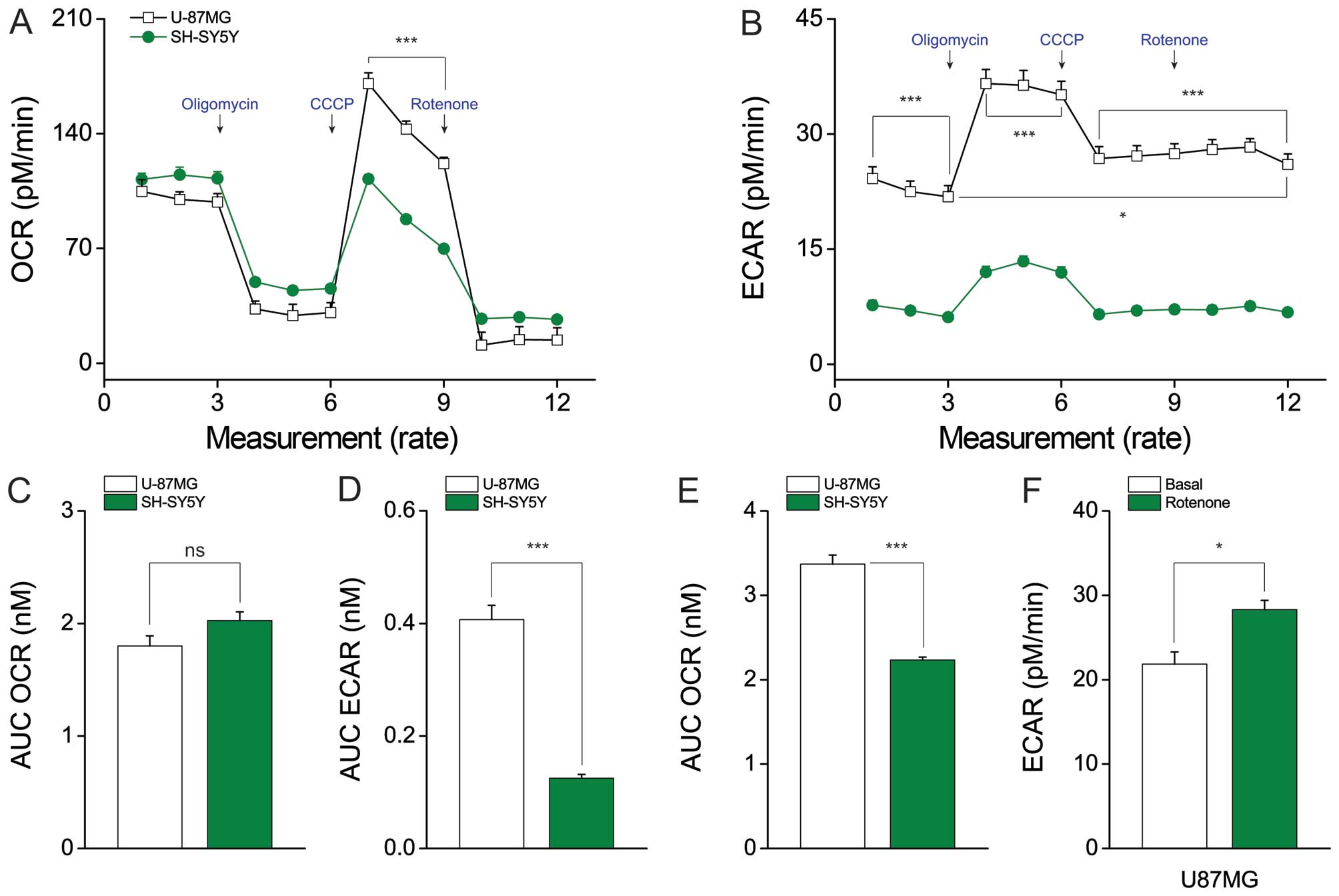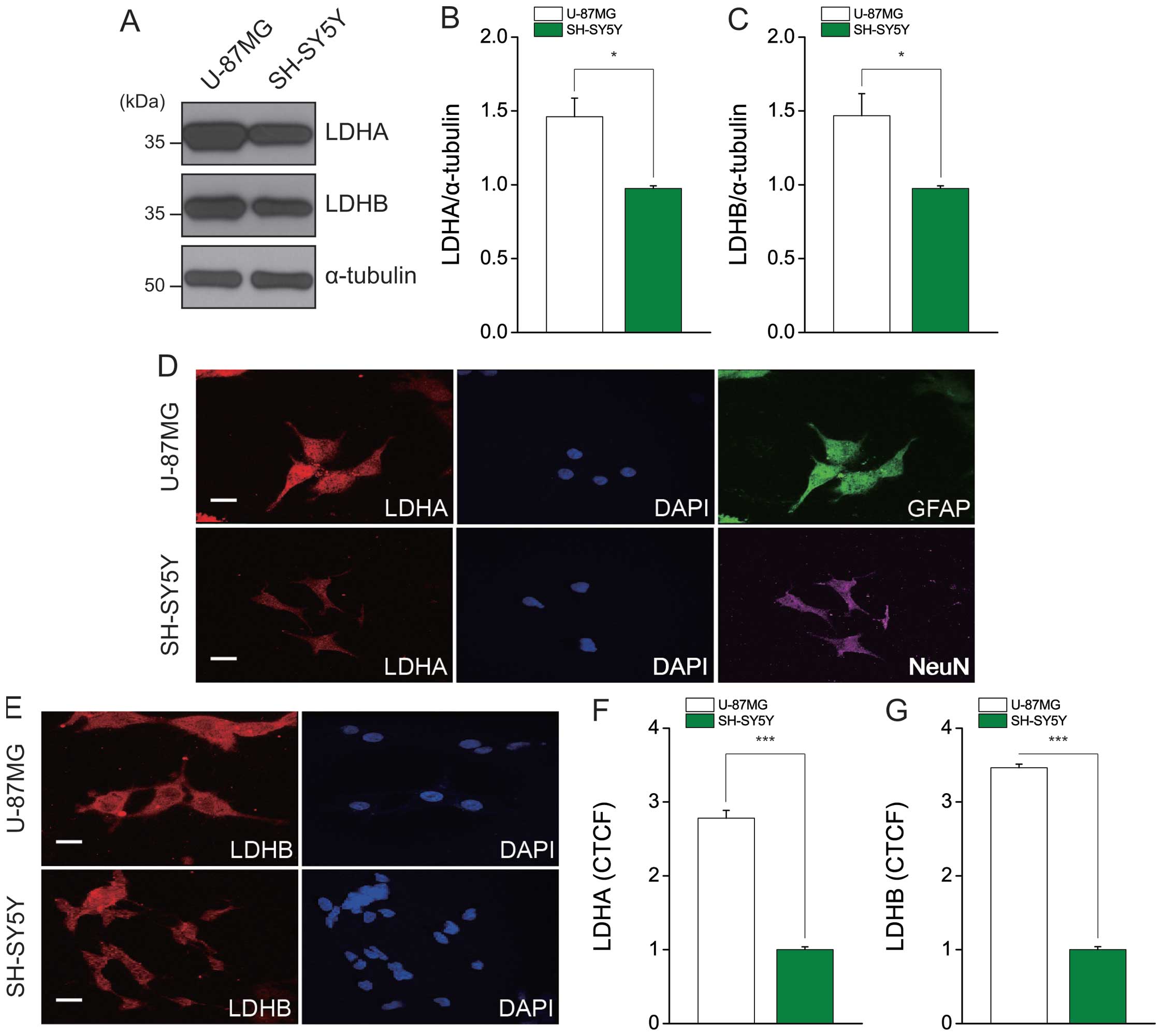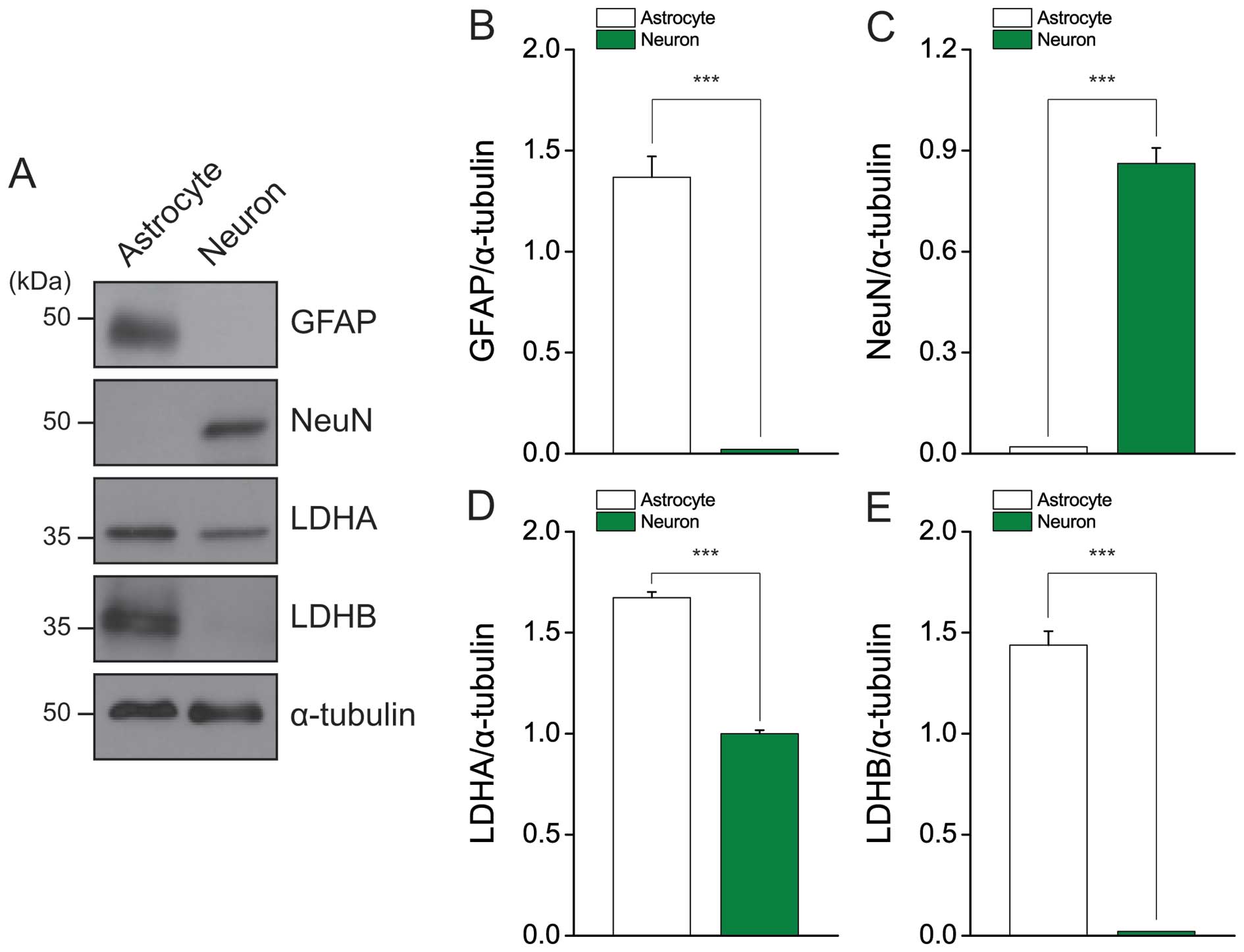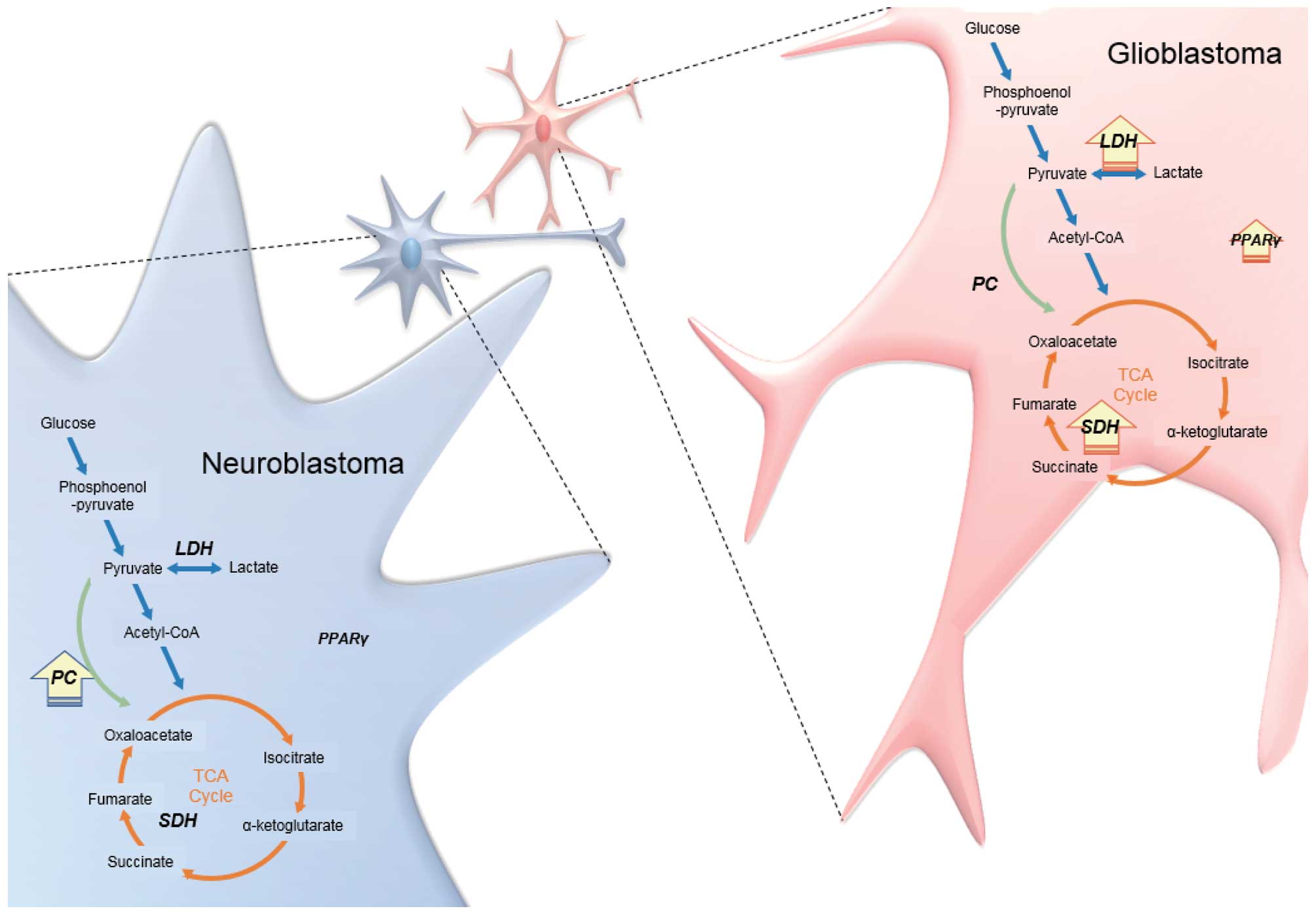|
1
|
Ohgaki H and Kleihues P: Population-based
studies on incidence, survival rates, and genetic alterations in
astrocytic and oligodendroglial gliomas. J Neuropathol Exp Neurol.
64:479–489. 2005.PubMed/NCBI
|
|
2
|
Campbell AM, Rennie JS, Moos KF and Patton
D: Neuroblastoma presenting as mandibular swelling in a
two-year-old girl - a short case report. Br J Oral Maxillofac Surg.
25:422–426. 1987. View Article : Google Scholar : PubMed/NCBI
|
|
3
|
Diehn M, Nardini C, Wang DS, McGovern S,
Jayaraman M, Liang Y, Aldape K, Cha S and Kuo MD: Identification of
noninvasive imaging surrogates for brain tumor gene-expression
modules. Proc Natl Acad Sci USA. 105:5213–5218. 2008. View Article : Google Scholar : PubMed/NCBI
|
|
4
|
Buckner JC: Factors influencing survival
in high-grade gliomas. Semin Oncol. 30(Suppl 19): S10–S14. 2003.
View Article : Google Scholar
|
|
5
|
Bouzier-Sore AK and Pellerin L: Unraveling
the complex metabolic nature of astrocytes. Front Cell Neurosci.
7:1792013. View Article : Google Scholar : PubMed/NCBI
|
|
6
|
Bélanger M, Allaman I and Magistretti PJ:
Brain energy metabolism: Focus on astrocyte-neuron metabolic
cooperation. Cell Metab. 14:724–738. 2011. View Article : Google Scholar : PubMed/NCBI
|
|
7
|
Suzuki A, Stern SA, Bozdagi O, Huntley GW,
Walker RH, Magistretti PJ and Alberini CM: Astrocyte-neuron lactate
transport is required for long-term memory formation. Cell.
144:810–823. 2011. View Article : Google Scholar : PubMed/NCBI
|
|
8
|
Walz W and Mukerji S: Lactate production
and release in cultured astrocytes. Neurosci Lett. 86:296–300.
1988. View Article : Google Scholar : PubMed/NCBI
|
|
9
|
Dringen R, Wiesinger H and Hamprecht B:
Uptake of L-lactate by cultured rat brain neurons. Neurosci Lett.
163:5–7. 1993. View Article : Google Scholar : PubMed/NCBI
|
|
10
|
Bagley PR, Tucker SP, Nolan C, Lindsay JG,
Davies A, Baldwin SA, Cremer JE and Cunningham VJ: Anatomical
mapping of glucose transporter protein and pyruvate dehydrogenase
in rat brain: An immunogold study. Brain Res. 499:214–224. 1989.
View Article : Google Scholar : PubMed/NCBI
|
|
11
|
Cahn RD, Zwilling E, Kaplan NO and Levine
L: Nature and Development of Lactic Dehydrogenases: The two major
types of this enzyme form molecular hybrids which change in makeup
during development. Science. 136:962–969. 1962. View Article : Google Scholar : PubMed/NCBI
|
|
12
|
Bittar PG, Charnay Y, Pellerin L, Bouras C
and Magistretti PJ: Selective distribution of lactate dehydrogenase
isoenzymes in neurons and astrocytes of human brain. J Cereb Blood
Flow Metab. 16:1079–1089. 1996. View Article : Google Scholar : PubMed/NCBI
|
|
13
|
Crane CA, Austgen K, Haberthur K, Hofmann
C, Moyes KW, Avanesyan L, Fong L, Campbell MJ, Cooper S, Oakes SA,
et al: Immune evasion mediated by tumor-derived lactate
dehydrogenase induction of NKG2D ligands on myeloid cells in
glioblastoma patients. Proc Natl Acad Sci USA. 111:12823–12828.
2014. View Article : Google Scholar : PubMed/NCBI
|
|
14
|
Nieder C, Marienhagen K, Dalhaug A,
Aandahl G, Haukland E and Pawinski A: Prognostic models predicting
survival of patients with brain metastases: Integration of lactate
dehydrogenase, albumin and extracranial organ involvement. Clin
Oncol (R Coll Radiol). 26:447–452. 2014. View Article : Google Scholar
|
|
15
|
Woo DH, Han KS, Shim JW, Yoon BE, Kim E,
Bae JY, Oh SJ, Hwang EM, Marmorstein AD, Bae YC, et al: TREK-1 and
Best1 channels mediate fast and slow glutamate release in
astrocytes upon GPCR activation. Cell. 151:25–40. 2012. View Article : Google Scholar : PubMed/NCBI
|
|
16
|
Biedler JL, Helson L and Spengler BA:
Morphology and growth, tumorigenicity, and cytogenetics of human
neuroblastoma cells in continuous culture. Cancer Res.
33:2643–2652. 1973.PubMed/NCBI
|
|
17
|
Warburg O: On respiratory impairment in
cancer cells. Science. 124:269–270. 1956.PubMed/NCBI
|
|
18
|
Vander Heiden MG, Cantley LC and Thompson
CB: Understanding the Warburg effect: The metabolic requirements of
cell proliferation. Science. 324:1029–1033. 2009. View Article : Google Scholar : PubMed/NCBI
|
|
19
|
Wang R, Novick SJ, Mangum JB, Queen K,
Ferrick DA, Rogers GW and Stimmel JB: The acute extracellular flux
(XF) assay to assess compound effects on mitochondrial function. J
Biomol Screen. 20:422–429. 2015. View Article : Google Scholar
|
|
20
|
Park JW, Lee SY, Yang JY, Rho HW, Park BH,
Lim SN, Kim JS and Kim HR: Effect of carbonyl cyanide
m-chlorophenylhydra-zone (CCCP) on the dimerization of lipoprotein
lipase. Biochim Biophys Acta. 1344:132–138. 1997. View Article : Google Scholar : PubMed/NCBI
|
|
21
|
Xie J, Wu H, Dai C, Pan Q, Ding Z, Hu D,
Ji B, Luo Y and Hu X: Beyond Warburg effect - dual metabolic nature
of cancer cells. Sci Rep. 4:49272014.
|
|
22
|
Chiarugi A, Dölle C, Felici R and Ziegler
M: The NAD metabolome - a key determinant of cancer cell biology.
Nat Rev Cancer. 12:741–752. 2012. View
Article : Google Scholar : PubMed/NCBI
|
|
23
|
Jitrapakdee S, St Maurice M, Rayment I,
Cleland WW, Wallace JC and Attwood PV: Structure, mechanism and
regulation of pyruvate carboxylase. Biochem J. 413:369–387. 2008.
View Article : Google Scholar : PubMed/NCBI
|
|
24
|
Brown AM and Ransom BR: Astrocyte glycogen
and brain energy metabolism. Glia. 55:1263–1271. 2007. View Article : Google Scholar : PubMed/NCBI
|
|
25
|
Gatenby RA and Gillies RJ: Why do cancers
have high aerobic glycolysis? Nat Rev Cancer. 4:891–899. 2004.
View Article : Google Scholar : PubMed/NCBI
|
|
26
|
Fischer K, Hoffmann P, Voelkl S,
Meidenbauer N, Ammer J, Edinger M, Gottfried E, Schwarz S, Rothe G,
Hoves S, et al: Inhibitory effect of tumor cell-derived lactic acid
on human T cells. Blood. 109:3812–3819. 2007. View Article : Google Scholar : PubMed/NCBI
|
|
27
|
Hirschhaeuser F, Sattler UG and
Mueller-Klieser W: Lactate: A metabolic key player in cancer.
Cancer Res. 71:6921–6925. 2011. View Article : Google Scholar : PubMed/NCBI
|
|
28
|
Van Meir EG, Hadjipanayis CG, Norden AD,
Shu HK, Wen PY and Olson JJ: Exciting new advances in
neuro-oncology: The avenue to a cure for malignant glioma. CA
Cancer J Clin. 60:166–193. 2010. View Article : Google Scholar : PubMed/NCBI
|
|
29
|
Stickland LH: The Pasteur effect in normal
yeast and its inhibition by various agents. Biochem J. 64:503–515.
1956. View Article : Google Scholar : PubMed/NCBI
|
|
30
|
Lovatt D, Sonnewald U, Waagepetersen HS,
Schousboe A, He W, Lin JH, Han X, Takano T, Wang S, Sim FJ, et al:
The transcriptome and metabolic gene signature of protoplasmic
astrocytes in the adult murine cortex. J Neurosci. 27:12255–12266.
2007. View Article : Google Scholar : PubMed/NCBI
|
|
31
|
Kim HM, Kim H, Jung WH and Koo JS:
Metabolic phenotypes in primary unknown metastatic carcinoma. J
Transl Med. 12:22014. View Article : Google Scholar : PubMed/NCBI
|
|
32
|
Nakajima A, Tomimoto A, Fujita K, Sugiyama
M, Takahashi H, Ikeda I, Hosono K, Endo H, Yoneda K, Iida H, et al:
Inhibition of peroxisome proliferator-activated receptor gamma
activity suppresses pancreatic cancer cell motility. Cancer Sci.
99:1892–1900. 2008. View Article : Google Scholar : PubMed/NCBI
|
|
33
|
Omar HA, Berman-Booty L, Kulp SK and Chen
CS: Energy restriction as an antitumor target. Future Oncol.
6:1675–1679. 2010. View Article : Google Scholar : PubMed/NCBI
|
|
34
|
Le A, Cooper CR, Gouw AM, Dinavahi R,
Maitra A, Deck LM, Royer RE, Vander Jagt DL, Semenza GL and Dang
CV: Inhibition of lactate dehydrogenase A induces oxidative stress
and inhibits tumor progression. Proc Natl Acad Sci USA.
107:2037–2042. 2010. View Article : Google Scholar : PubMed/NCBI
|
|
35
|
Fantin VR, St-Pierre J and Leder P:
Attenuation of LDH-A expression uncovers a link between glycolysis,
mitochondrial physiology, and tumor maintenance. Cancer Cell.
9:425–434. 2006. View Article : Google Scholar : PubMed/NCBI
|



